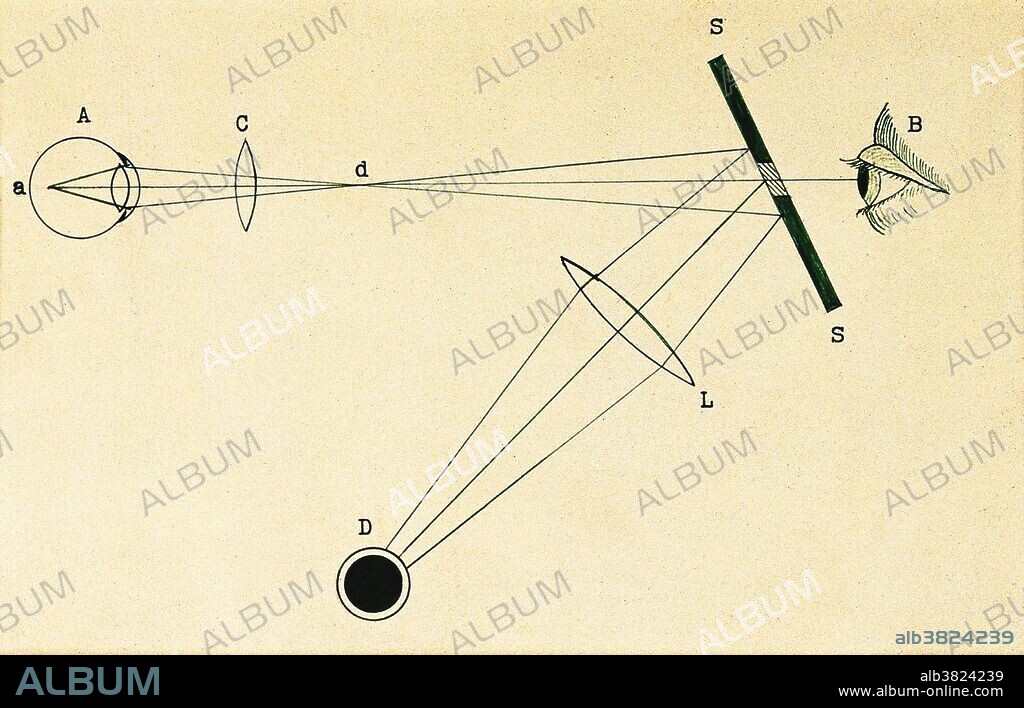alb3824239
Principle of Helmholtz's Ophthalmoscope, 1867

|
Ajouter à une autre Lightbox |
|
Ajouter à une autre Lightbox |



Avez-vous déjà un compte? S'identifier
Vous n'avez pas de compte ? S'inscrire
Acheter cette image

Titre:
Principle of Helmholtz's Ophthalmoscope, 1867
Légende:
Voir la traduction automatique
A diagram to show the principle of Helmholtz's ophthalmoscope, 1867. The optical arrangement ensured that the retina of the eye was illuminated by an almost parallel beam of light and that the beam of light was not cut off by the observer. A. The eye of the patient. B. The observer. SS. The mirror. L. and C. Lenses for giving an almost parallel beam of light. Hermann von Helmholtz (1821-1894) was a German physician and physicist who made significant contributions in several scientific fields, including the mathematics of the eye, theories of vision, color vision research, and in work on the conservation of energy, electrodynamics, and thermodynamics.
Crédit:
Album / Science Source / Wellcome Images
Autorisations:
Modèle: Non - Propriété: Non
Questions sur les droits?
Questions sur les droits?
Taille de l'image:
3600 x 2301 px | 23.7 MB
Taille d'impression:
30.5 x 19.5 cm | 12.0 x 7.7 in (300 dpi)
Mots clés:
 Pinterest
Pinterest Twitter
Twitter Facebook
Facebook Copier le lien
Copier le lien Email
Email
